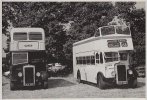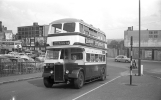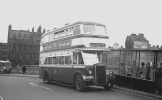Radiorails
master brummie
The Guy Conquest's has short lives with the Corporation just lasting five to six years.. they were replaced by Daimler single deckers with AOP and BOL registrations. In 1933 the Tramways and Omnibus Committee in formed the Gas Committee that it was experimenting with a single bus that would run on coal gas. It lasted until 1935 when other experiments with a Daimler diesel were successful. That














